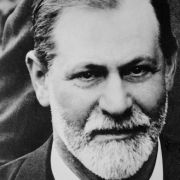
Identity
Identity encompasses the memories, experiences, relationships, and values that create one’s sense of self. This amalgamation creates a steady sense of who one is over time, even as new facets are developed and incorporated into one's identity.

Everyone struggles with existential questions such as, “Who am I?” and “Who do I want my future self to be?” One reason why may be that the answer is so complex.
Identity includes the many relationships people cultivate, such as their identity as a child, friend, partner, and parent. It involves external characteristics over which a person has little or no control, such as height, race, or socioeconomic class. Identity also encompasses political opinions, moral attitudes, and religious beliefs, all of which guide the choices one makes on a daily basis.
People who are overly concerned with the impression they make, or who feel a core aspect of themselves, such as gender or sexuality, is not being expressed, can struggle acutely with their identity. Reflecting on the discrepancy between who one is and who one wants to be can be a powerful catalyst for change.
Identity encompasses the values people hold, which dictate the choices they make. An identity contains multiple roles—such as a mother, teacher, and U.S. citizen—and each role holds meaning and expectations that are internalized into one’s identity. Identity continues to evolve over the course of an individual’s life.
Identity formation involves three key tasks: Discovering and developing one’s potential, choosing one’s purpose in life, and finding opportunities to exercise that potential and purpose. Identity is also influenced by parents and peers during childhood and experimentation in adolescence.
Every individual has a goal of nurturing values and making choices that are consistent with their true self. Some internalize the values of their families or culture, even though they don’t align with their authentic self. This conflict can drive dissatisfaction and uncertainty. Reflecting on one’s values can spark change and a more fulfilling life.
The idea of an identity crisis emerged from psychologist Erik Erikson, who delineated eight stages of crises and development, a concept later expanded upon by others. Although not a clinical term, an identity crisis refers to facing a challenge to one’s sense of self, which may center around politics, religion, career choices, or gender roles.
Adolescence is a time in which children develop an authentic sense of self, distinct from their parents, in order to become an independent adult. Experimentation is an important part of the process: As teens try on different identities—in terms of friends, hobbies, appearance, gender, and sexuality—they come to understand who they are and who they want to be.
Features of identity can highlight similarities or differences between people—through race, gender, or profession—which can function to either unite or divide. People who view themselves as members of a larger overarching group tend to have stronger kinship with other people, animals, and nature.

A hunger for authenticity guides us in every age and aspect of life. It drives our explorations of work, relationships, play, and prayer. Teens and twentysomethings try out friends, fashions, hobbies, jobs, lovers, locations, and living arrangements to see what fits and what's "just not me." Midlifers deepen commitments to career, community, faith, and family that match their self-images, or feel trapped in existences that seem not their own. Elders regard life choices with regret or satisfaction based largely on whether they were "true" to themselves.
Authenticity is also a cornerstone of mental health. It’s correlated with many aspects of psychological well-being, including vitality, self-esteem, and coping skills. Acting in accordance with one's core self—a trait called self-determination—is ranked by some experts as one of three basic psychological needs, along with competence and a sense of relatedness.
Everyone subconsciously internalizes conventions and expectations that dictate how they believe they should think or behave. The decision to examine or challenge those assumptions, even though it’s difficult, is the first step to living more authentically. This set of 20 steps can guide you through that process.
There can be tension between being wholly yourself and operating successfully in your relationships and career. No one should be completely deceitful or completely forthright; a guiding principle to achieve a balance is that as long as you’re not forced to act in opposition to your values or personality, a little self-monitoring can be warranted.
Relationships can come under threat when there’s a disconnect between expressing yourself freely and taking your partner’s feelings into account. The Authenticity in Relationships scale —which measures this construct through statements such as “I am fully aware of when to insist on myself and when to compromise”—can initiate discussion and help couples cultivate a healthy balance.
As so much of the world has shifted online, discrepancies have emerged between one’s virtual self and real self. People may cultivate their online avatar more and more carefully over time, and the virtual self can influence the perception of the real self. Therefore, it can be valuable to reflect on whether the virtual self is really authentic.

One of the most enduring theories of development was proposed by psychologist Erik Erikson. Erikson divided the lifecycle into eight stages that each contained a conflict, with the resolution of those conflicts leading to the development of personality. The conflict that occurs during adolescence, Erikson believed, is “identity versus role confusion.”
Adolescents grapple with so many different aspects of identity, from choosing a career path to cultivating moral and political beliefs to becoming a friend or partner. Role confusion pertains to the inability to commit to one path. Adolescents then go through a period of experimentation before committing, reconciling the pieces of their identity, and emerging into adulthood.
Identity formation is most acute during adolescence, but the process doesn’t stop after the teen years. Taking on a new role, such as becoming a parent, can make self-definition a lifelong process.
As a person grows older, the overall trend is toward identity achievement. But major life upheavals, such as divorce, retirement, or the death of a loved one, often lead people to explore and redefine their identities.
According to Freud’s psychoanalytic framework, the mind was composed of the id, driven by instinct and desire, the superego, driven by morality and values, and the ego which moderates the two and creates one’s identity. Many features contribute to ego functioning, including insight, agency, empathy, and purpose.
Erik Erikson’s proposed a theory of development based on different stages of life. He also coined the term “ego identity,” which he conceived as an enduring and continuous sense of who a person is. The ego identity helps to merge all the different versions of oneself (the parent self, the career self, the sexual self) into one cohesive whole, so that if disaster strikes, there's a stable sense of self.
Social psychologist Henri Tajfel conducted pioneering research on prejudice, revealing that people favor those in their own groups, even when those groups are designated randomly, such as by people’s preferences for artwork. This research was the basis for Social Identity Theory—that self-esteem is in part derived from group membership, which provides pride and social identity.














